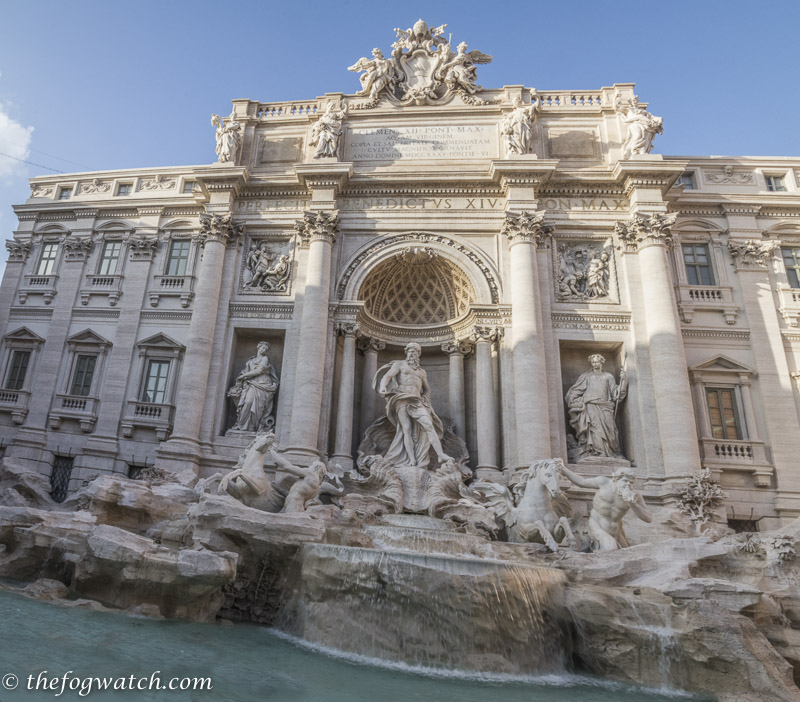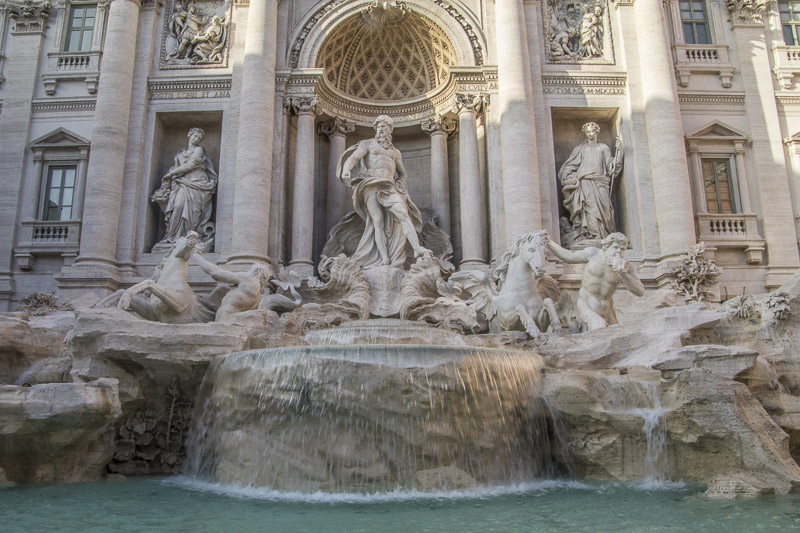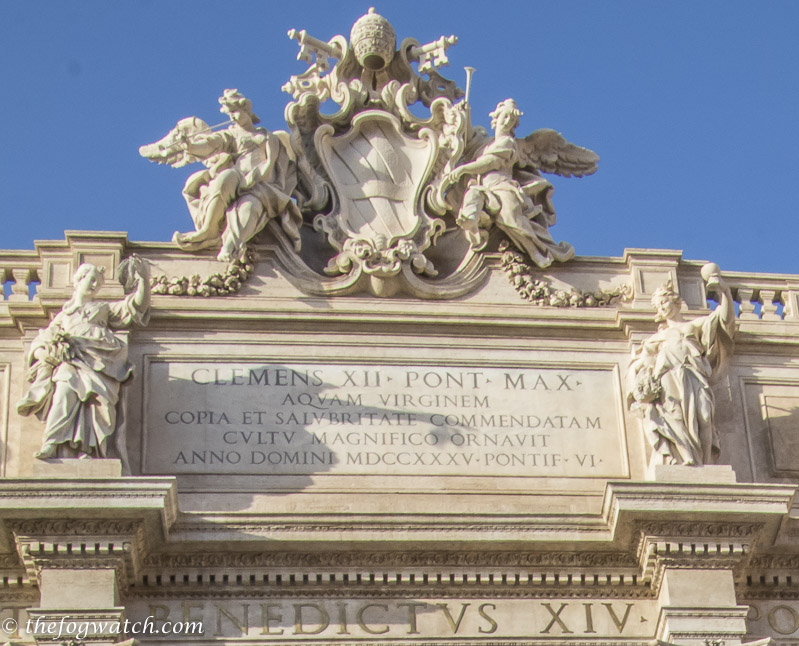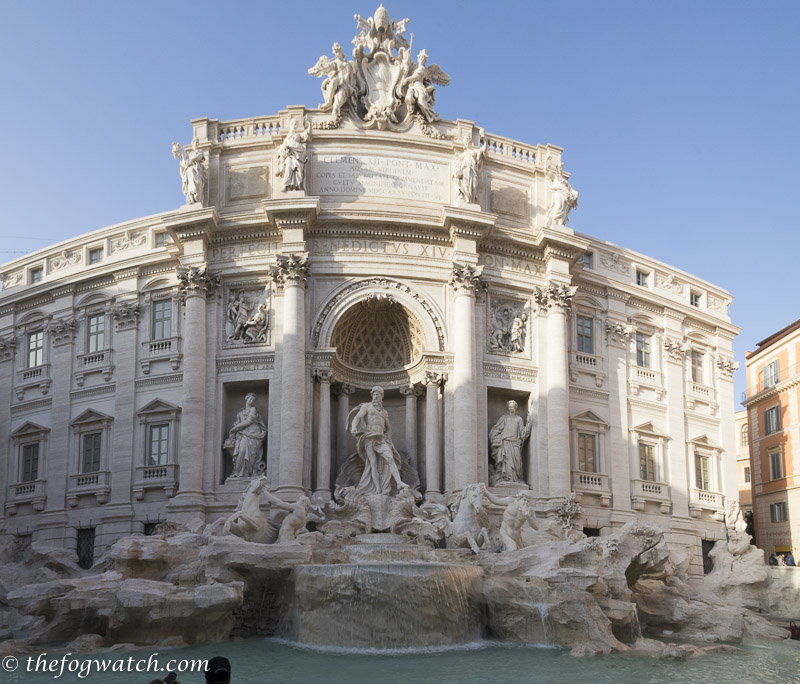Just about everyone who travels to Rome tosses a coin or two into the Trevi Fountain (Fontana di Trevi) – myself included! Legend has it, that if you throw a coin into the fountain over your opposite shoulder, you will return to Rome. Such rituals have their roots way back thousands of years before Christianity, whereby valuable items were tossed into water sources to keep the water gods happy. Today it serves a charitable purpose. Around €3,000 or US$3350 a day is tossed into the fountain. In 2016 around US$1.5m went into the fountain, our own coins among them. The money is collected each night and given to a charity that supports homeless and destitute families through a special supermarket. And yes it’s against the law to remove money from the fountain.

But the Trevi fountain is special in part because of the water that supplies it. In fact, there has been a fountain on this spot since 19BC and even today it is still fed by the Virgo Aqueduct built by Agrippa. It was the only one to survive intact into modern times as it mostly ran underground. Today, most of the water is recycled for environmental reasons, but the source is still the ancient aqueduct.
The fountain lies at the intersection of three roads – Tre Vie – or Trevi as it has come to be known today. There is a legend that when the Roman engineers were seeking a fresh water source, a young woman took them to a spring around 13kms from the city. The aqueduct was named in her honour as the Aqua Vergine, or Aqua Virgo. This legend is depicted in a bas-relief. The aqueduct fed the Agrippa baths for 400 years near the present site of the fountain.

The Trevi Fountain we see today was commissioned by Pope Clement XII in 1730. He held a competition for the design which was initially won by Alessandro Galilei – a Florentine and relative of the astronomer Galileo Galilei. But there was a great public outcry that a Florentine had won, forcing a re-vote finally won by Nicola Salvi.
The main figures are Oceana riding on a shell chariot drawn by two horses, each led by a Triton. One of the horses is calm, the other tempestuous showing the changeable moods of water.
On either side are niches depicting Abundance pouring water from an urn, and the other depicts Salubrity, holding a cup with a snake drinking from it.

The top is crowned with the Papal insignia showing the beehive hat and the crossed keys of St Peter over a plaque with a dedication to Pope Clement XII.

Water is essential for life. Ancient Rome’s 11 aqueducts ensured enough water flowing into the city to provide for more than a million inhabitants. But Rome’s great strength was also its vulnerability – dependence on water supplies brought from 13kms away. The aqueducts were critical infrastructure. Most of them were carried on massive stone pylons that could be destroyed by war or earthquake. While there were springs within the city boundaries, the water was brackish. And water from the Tiber carried disease. But there was good fresh spring water just a few kilometres away in the Anio mountains. With the destruction of the surface aqueducts, the population of Rome declined rapidly, leaving a residual population among the ruins of Rome’s great civilisation.
Gradually Rome was rebuilt achieving greatness once again in the Renaissance and into the modern world. The Trevi fountain is one of the few working survivals from ancient Rome – a reminder that a good water supply is necessary to sustain us, and that sometimes our greatest strength can also mask a fundamental weakness.
Whether you are inspired by films like La Dolce Vita or Roman Holiday, or you are drawn to the fountain for the artwork or just to toss in a coin hoping to secure your return to Rome, it is worth thinking about the water that supplies it, and consider where our own water comes from.
________________________________________
Why not have these posts delivered to your in-box? Just enter your email address and click the ‘subscribe’ button in the left margin, and don’t forget to respond to the confirmation email in your in-box 🙂
________________________________________


Thanks Jerry, For the history of the Trevi Fountain, one of my favourite places in Rome.
Thanks Meryl – I always think it’s interesting to go past the surface. Sometimes it can turn out surprising and fascinating 🙂